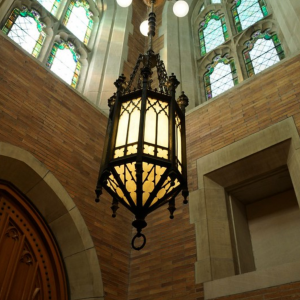We’re opening up the music vault to rediscover two fully staged performances from the Case Western Reserve University Department of Music Historical Performance Practice Program.
Enjoy the following videos and subscribe to the CWRU Department of Music YouTube channel for more!
(1993) Oberon, The Faery Prince: A Masque of Prince Henries, 1611
Recorded in the Excelsior Ballroom, Thwing Student Center, Case Western Reserve University, Cleveland, Ohio, in March 1993. Videodisc of a live performance produced in 1993.
Introduction by Ross W. Duffin: discussion of the political and cultural significance of the masque at the court of King James I. Includes a synopsis of the work.
Afterword by Thomas Bishop: background information about Oberon, the faery prince, including an examination of the sources used in reconstructing the physical setting, designs, dances (coranto, galliard, and branle), and music.
Reaction: brief commentaries by specialists in the fields of early music, dance, and theater (Peter Walls, Peter Holman, Carol Marsh, Fritz Levy, and Stephen Orgel).
(1997) Carmina Burana: A 13th-Century Student Party
View a recording of Carmina Burana.
Recorded in Harkness Chapel, Case Western Reserve University, Cleveland, Ohio, on January 29, 1997. Video of a live performance produced in 1999.
Story & Original Poetic Narration: Ross Duffin, Fyette H. Kulas Professor Emeritus of Music and Distinguished University Professor Emeritus
Carmina Burana is a manuscript of poems and dramatic texts mostly from the 11th or 12th century, although some are from the 13th century. The pieces are mostly bawdy, irreverent, and satirical. They were written by students and clergy when Latin was the lingua franca throughout Italy and western Europe for traveling scholars, universities, and theologians. Most of the poems and songs appear to be the work of Goliards, clergy (mostly students) who satirized the Catholic Church. The collection preserves the works of a number of poets.


